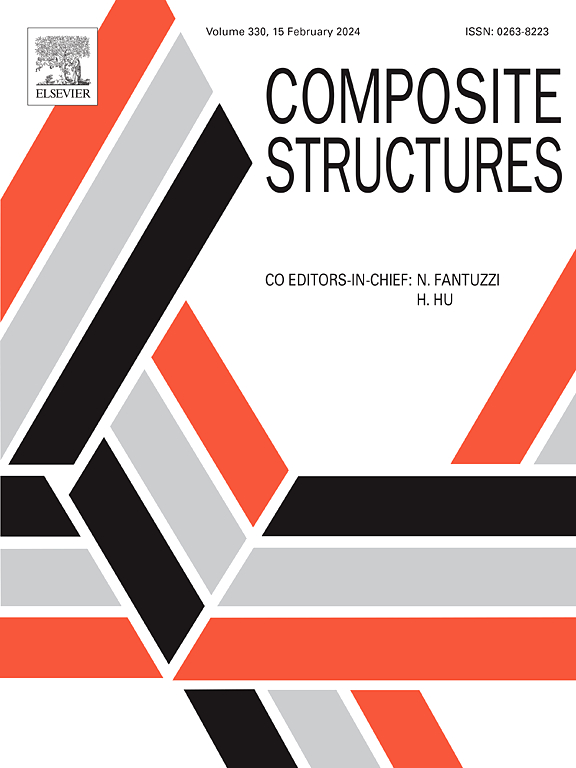A multi-objective optimization approach to design bistable collapsible tubular mast
IF 7.1
2区 材料科学
Q1 MATERIALS SCIENCE, COMPOSITES
引用次数: 0
Abstract
The collapsible tubular mast (CTM) is a deployable structure made of two omega shaped shells, with each omega composed of three arc segments. In the bistable CTM (Bi-CTM), in addition to the strain energy well associated with the stable deployed state, another strain energy well can be found corresponding to the stable coiled state. The arcs’ geometries influence the existence of the second strain energy well and the associated stable coiled radius, responsible for the boom’s packaging efficiency. Besides packaging efficiency, factors like bending stiffness are also contingent on the geometries of the arcs, leading to significant trade-offs among these metrics. In this work, we propose a multi-objective optimization (MOO) to find optimal compromises that balance these conflicting requirements of a CTM. Particularly, a coupling analytical models and evolutionary algorithms (EA) technique is presented, utilizing and bench-marking various state-of-the-art EAs. The MOO approach gives as output the Pareto front, a set of the non-dominated design points, which showcases different trade-offs solutions tailorable for specific space-applications. Different design points are presented and discussed based on higher-level considerations.
设计双稳态可折叠管状桅杆的多目标优化方法
可折叠管状桅杆(CTM)是一种由两个Ω形壳体组成的可展开结构,每个Ω形壳体由三个弧段组成。在双稳态 CTM(Bi-CTM)中,除了与稳定展开状态相关的应变能井外,还可以找到与稳定盘绕状态相对应的另一个应变能井。弧线的几何形状会影响第二个应变能井的存在和相关的稳定盘绕半径,从而影响吊杆的封装效率。除了封装效率,弯曲刚度等因素也取决于弧线的几何形状,从而导致这些指标之间的重大权衡。在这项工作中,我们提出了一种多目标优化(MOO)方法,以找到平衡 CTM 这些相互冲突的要求的最佳折衷方案。特别是,我们提出了一种分析模型与进化算法(EA)的耦合技术,并利用各种最先进的 EA 进行了标杆测试。MOO 方法的输出结果是帕累托前沿,即一组非主导设计点,展示了针对特定空间应用的不同权衡解决方案。不同的设计点基于更高层次的考虑因素进行展示和讨论。
本文章由计算机程序翻译,如有差异,请以英文原文为准。
求助全文
约1分钟内获得全文
求助全文
来源期刊

Composite Structures
工程技术-材料科学:复合
CiteScore
12.00
自引率
12.70%
发文量
1246
审稿时长
78 days
期刊介绍:
The past few decades have seen outstanding advances in the use of composite materials in structural applications. There can be little doubt that, within engineering circles, composites have revolutionised traditional design concepts and made possible an unparalleled range of new and exciting possibilities as viable materials for construction. Composite Structures, an International Journal, disseminates knowledge between users, manufacturers, designers and researchers involved in structures or structural components manufactured using composite materials.
The journal publishes papers which contribute to knowledge in the use of composite materials in engineering structures. Papers deal with design, research and development studies, experimental investigations, theoretical analysis and fabrication techniques relevant to the application of composites in load-bearing components for assemblies, ranging from individual components such as plates and shells to complete composite structures.
 求助内容:
求助内容: 应助结果提醒方式:
应助结果提醒方式:


